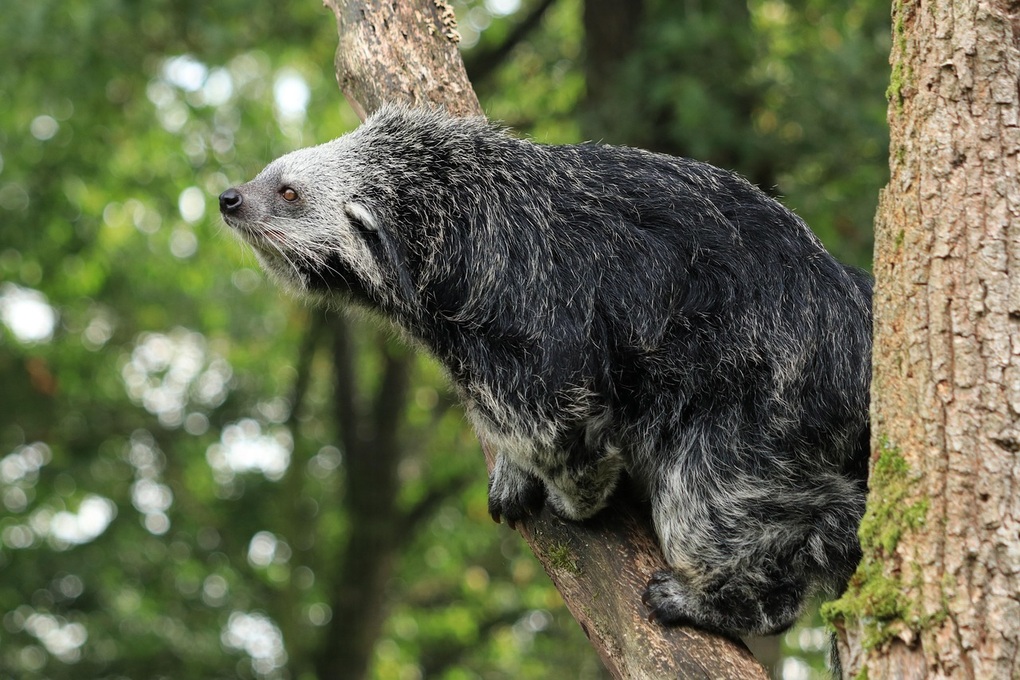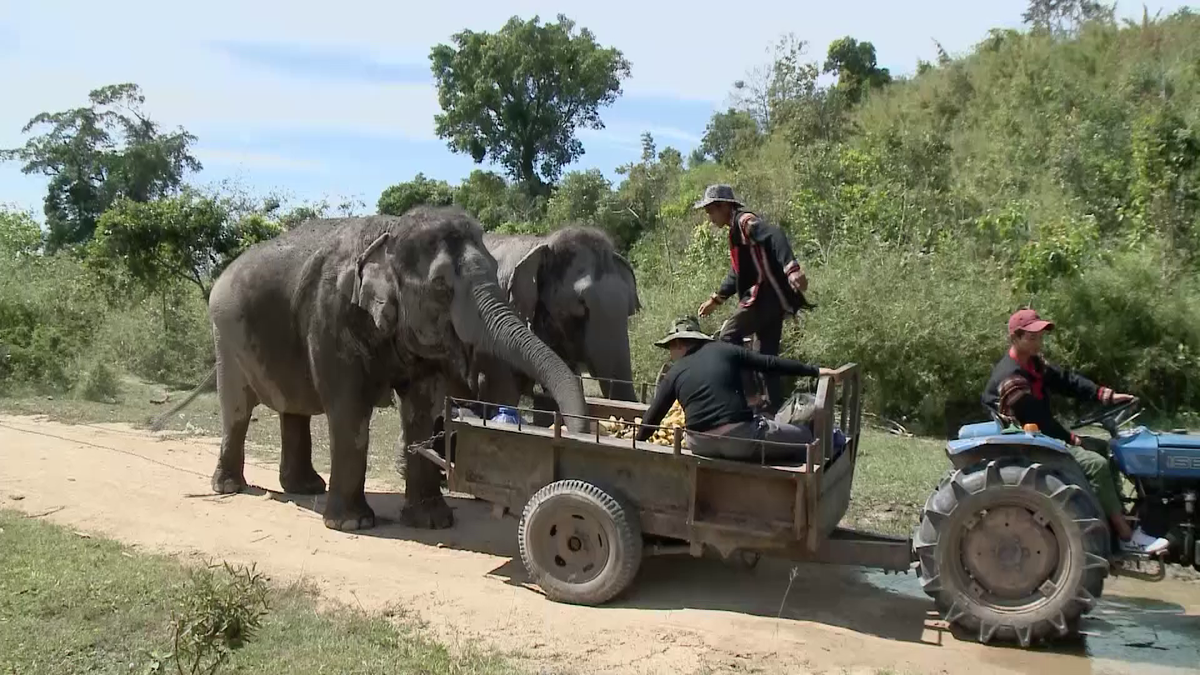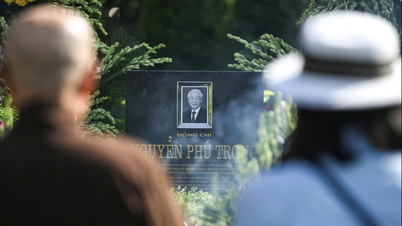A bear with a cat face
Binturong, also known as the ink civet, is a mammal of the civet family, distributed in the dense tropical forests of South Asia and Southeast Asia.
Binturongs are mostly solitary, preferring to curl up on tree branches to sleep during the day. They emerge at night to forage for food.
Their eyes are adapted to see in low light conditions, so their daytime vision is quite poor. However, their extremely keen sense of smell makes up for this disadvantage.

Binturong, also known as the ink civet, is a mammal of the civet family (Photo: Getty).
They stand out with thick black fur, a sturdy body 60-90 cm long, weighing 11-36 kg, and long mustaches that make anyone who sees them for the first time think of "a bear with a cat face".
Despite their seeming slow appearance, Binturong are excellent climbers. They possess long, strong tails that can grasp like real arms, allowing them to move flexibly, swinging between the forest canopy without fear of falling.
This trait makes them one of only two carnivores in the world with a fully prehensile tail, alongside the South American kinkajou.
During the day, this animal usually curls up and sleeps on high tree branches, away from dangers on the ground.
At night, when darkness covers the jungle, they begin their slow foraging journey through the branches, searching for fruit, eggs, insects or small birds.
This adaptation gives them an important role in the food chain and seed dispersal, maintaining the diversity of tropical forest ecosystems.
The Mysterious Scent of Popcorn
What makes Binturong the "strangest creature in the jungle" is not only its appearance but also the distinctive scent, the smell of hot popcorn, that it gives off.
According to scientific research, Binturong secretes the compound 2-acetyl-1-pyrroline, which is the substance that creates the attractive aroma when roasting popcorn or baking freshly baked bread.
Scent glands located near the base of the tail allow them to “scent” on branches and leaves, mark their territory, and announce their presence to other individuals in the dark, dense forest environment.
A study published in 2016 found that males have higher levels of this compound, suggesting that they use the scent to attract females, as well as to signal hormonal status, health, and territorial ownership.
In addition to scent, Binturong also possesses a diverse sound communication system: from snorts and giggles when comfortable to hissing, growling or howling when threatening.
This sound system helps them maintain contact with others in dense jungle environments where visibility is severely limited.
Binturong are an important link in the chain that helps disperse seeds and maintain forest regeneration. However, this "bear cat" species is facing serious threats.
Deforestation for timber, agricultural expansion, and hunting for meat, honey, or as pets are pushing the Binturong to the brink of extinction.
The International Union for Conservation of Nature (IUCN) has listed Binturong as “Vulnerable” and called on Southeast Asian countries, including Vietnam, to take urgent action to protect the habitat of this special species.
Source: https://dantri.com.vn/khoa-hoc/kham-pha-loai-vat-lai-giua-meo-va-gau-thom-mui-bong-ngo-20250706221551622.htm































































































Comment (0)